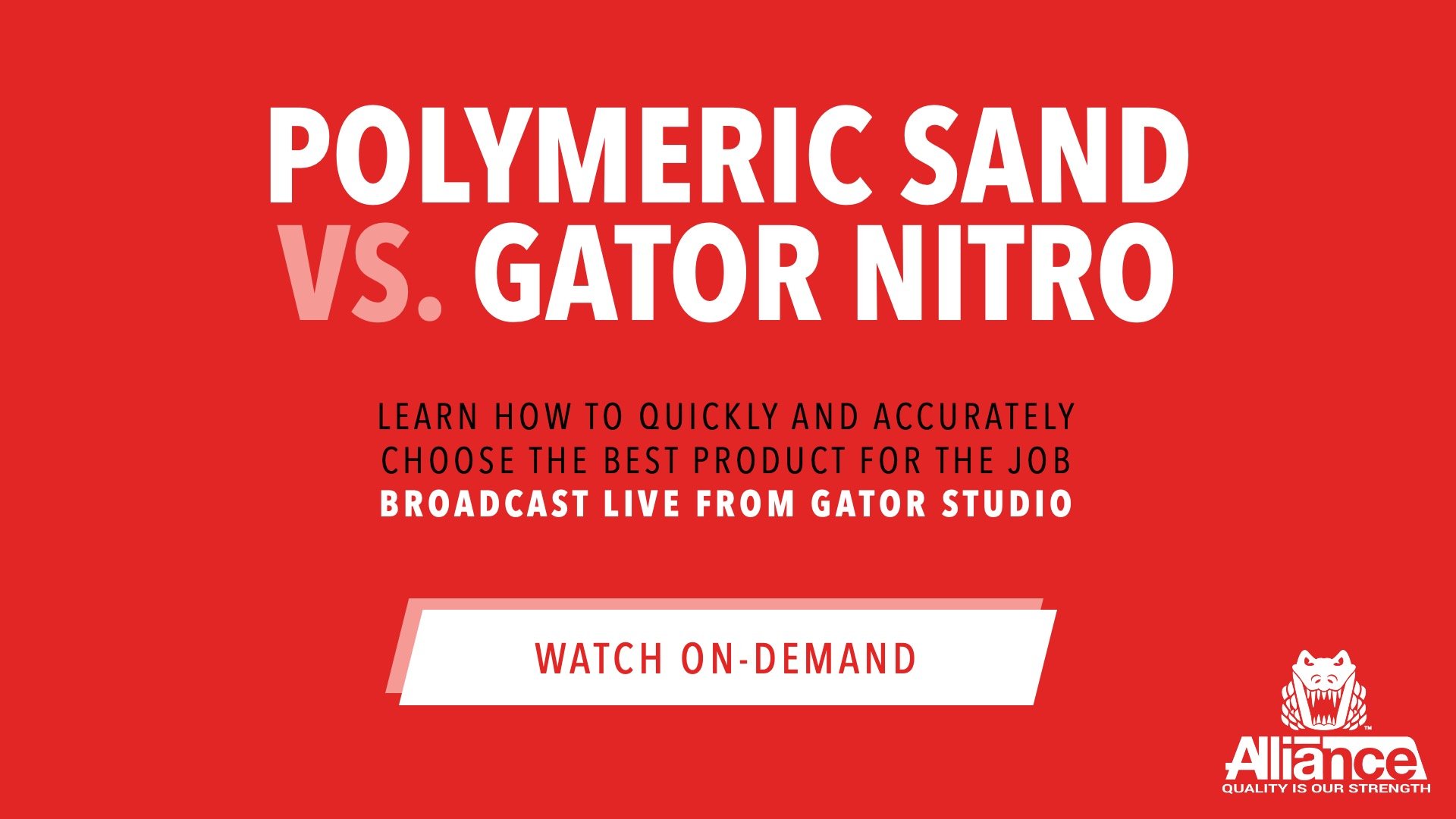GATOR NITRO VS. POLYMERIC SAND: THE 5 MAIN DIFFERENCES
Our new Gator Nitro is very different from polymeric sand … not better, just different! In this article, we’ll discuss the primary differences between Gator Nitro and poly sand to help you determine which product might be the better choice for your specific application.
Difference #1: Gator Nitro can be installed in rain or shine.
If you’re using Gator Nitro, rainy weather is not going to shut down your job. Gator Nitro can be installed in rain or shine. In fact, the surface needs to be very wet in order to install Gator Nitro so installing in the rain can actually be helpful! This is not the case with poly sand. If your surface is wet, you’ll have to pack it in and wait to install once conditions dry up. This can obviously equate to valuable time wasted.
Difference #2: Gator Nitro offers top-to-bottom strength.
Gator Nitro gets hard from top-to-bottom (so there’s very little flexibility within the joint). Polymeric sand works a little differently and typically forms a crust that might be anywhere from a half inch to an inch thick. A polymeric sand joint offers a durable, resilient and flexible crust supported by densely packed sand underneath. With that said, Gator Nitro doesn’t provide much in terms of flexibility so you’ll have to make sure there is no movement of the pavers or stones.
Difference #3: Gator Nitro is for pedestrian use & RESIDENTIAL DRIVEWAYS ONLY.
Because Gator Nitro will harden from top-to-bottom and offers very little flexibility, it’s only intended for pedestrian applications and residential driveways. Need a jointing material that can hold up to heavy vehicular traffic? Our G2 Gator Maxx polymeric sand would be worth exploring.
Difference #4: Gator Nitro is permeable when installed.
Poly sands are not permeable. Gator Nitro, on the other hand, actually sucks water in. It’s important to note that while Gator Nitro is permeable the day it’s installed, over time it might clog up if the surface is not properly cared for. A simple routine cleaning will take care of this! After 28 days, Nitro is pressure-washer safe. You can hit it lightly with a pressure washer, remove any dirt and debris from the pores, and it will maintain its permeability and last for a long time.
Difference #5: Gator Nitro is best for wider joints.
You’ll need at least a 3/16” wide joint for Gator Nitro to work properly. (You can go up to 2” wide.) The resins in Gator Nitro make it gummy and cohesive when you’re trying to force it into the joints. Because of that, you won’t be able to get it into those extremely tight hairline joints like you could with polymeric sand.
Find this information helpful? Be sure to download a copy of our Gator Nitro Quick Guide, which breaks down the product’s features and benefits so you can easily pick the right product for the job.


